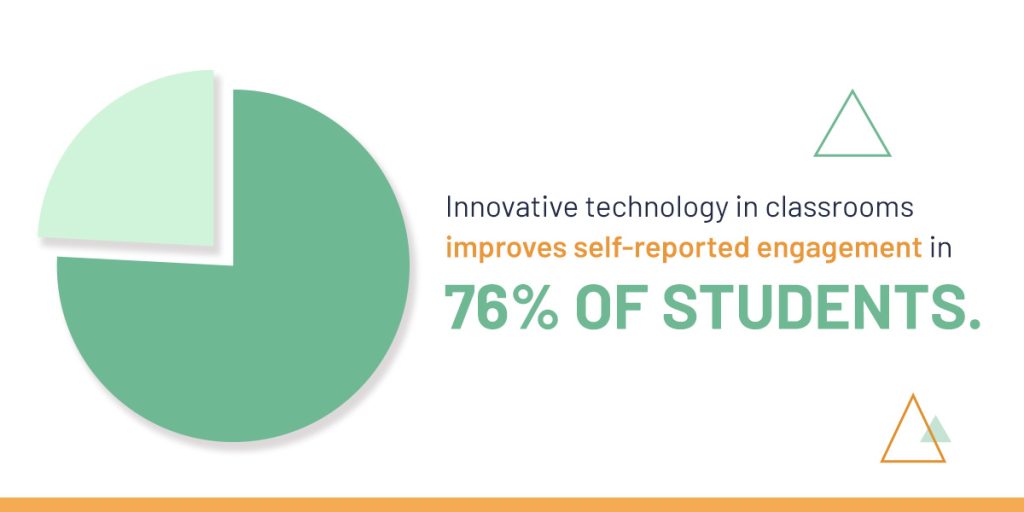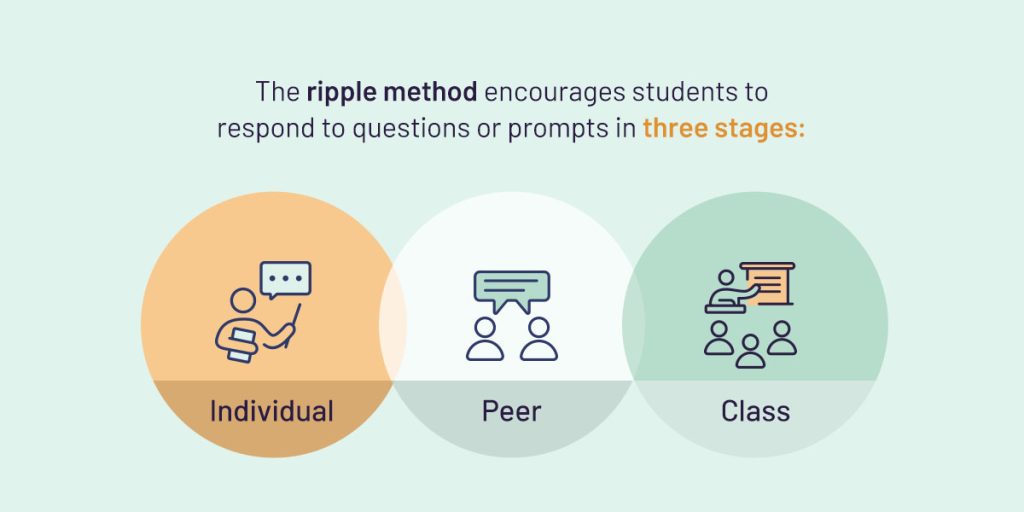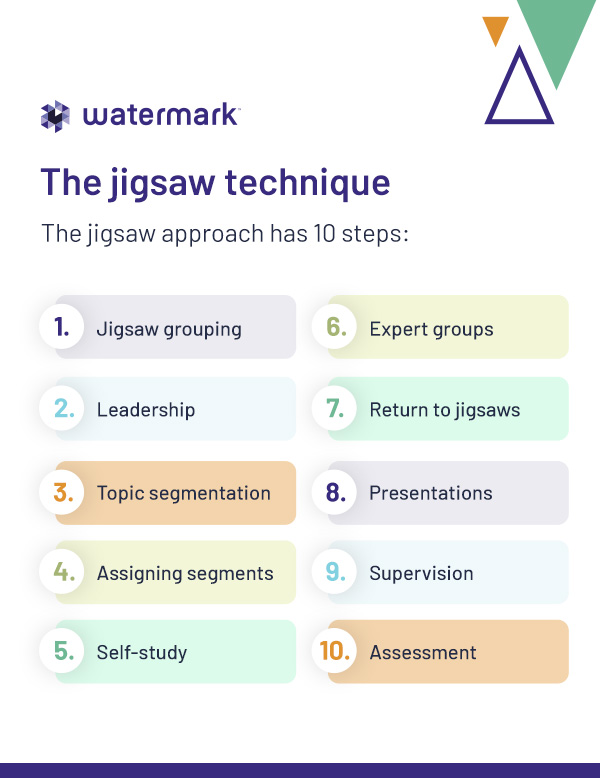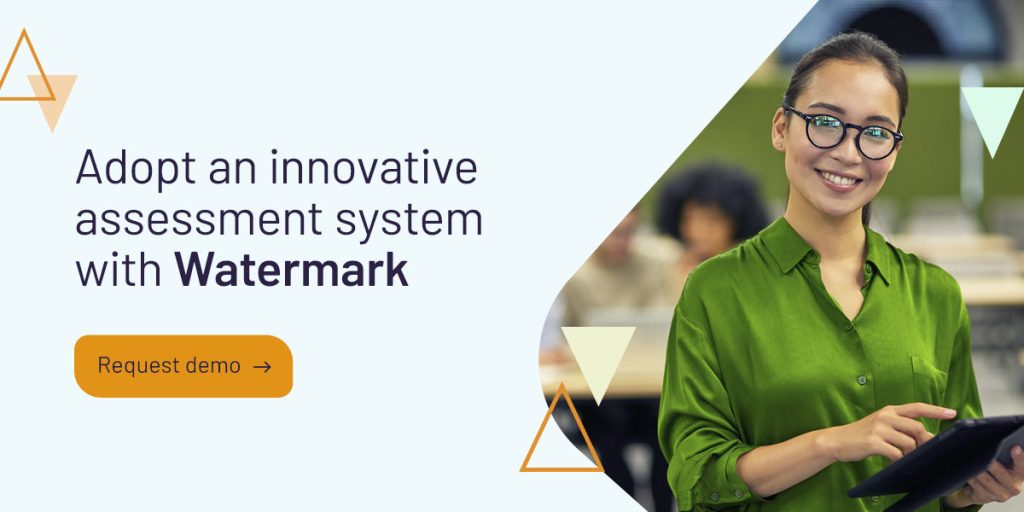




Technology has revolutionized nearly every aspect of our lives — from work to school to entertainment. Classrooms must stay up to date to keep students engaged and support their growth as modern learners. Many students say they lose focus during conventional lessons that lack creativity and interaction. By introducing fresh teaching tools and techniques, you can revitalize your classes. This guide to innovative teaching will give you nine ideas to modernize your classroom for an engaging learning experience.
Innovative teaching means more than buying the latest technologies, though these can be helpful tools. Innovative teaching is about finding fresh ways to enhance the learning process for every student.
By nature, innovative teaching adapts to different classes and brings out a teacher’s creativity. That means the best innovative approaches for one class may be different from another. But common features of innovative teaching approaches include:

If you are considering incorporating more elements of innovative teaching into your classes, the most important consideration is how this will affect your students. After all, a student-centered approach is only worth adopting if it really helps the students! Here are six ways innovative teaching tools and techniques support student success:
If you want to unlock the benefits of innovative teaching for your classes, the range of possibilities is vast and constantly expanding. But here are nine ideas that have been effective in real classrooms. Let them inspire you to explore the world of innovative teaching further for yourself as you discover what works best for your students.
The ripple method encourages students to respond to questions or prompts in three stages:

The ripple method is an effective way of promoting interaction in class. Rather than immediately asking students to raise their hands and share with everyone, the teacher builds up to that moment. This gives students time to formulate and refine their responses through interaction, generating greater confidence and willingness to participate.
Project-based learning (PBL) introduces students to a new concept and then asks them to find a real-world problem related to that concept and devise a solution. PBL goes beyond the conventional use of projects as a summative assessment method at the end of a course. Instead, PBL is a formative assessment approach in which the project is the teaching tool.
While students have substantial autonomy in PBL, the teacher still plays an important role. You become a coach, helping students find gaps in their approach to a project and sharing helpful resources. You aim to support them as they drive their own discoveries.
PBL is an active, engaged learning style that helps students improve their research skills, critical thinking, and problem-solving. This approach’s real-world practicality helps motivate students by showing them the relevance of the learning material. Often, PBL involves group collaboration, giving students a chance to practice their soft skills as well.
The jigsaw technique is a collaborative learning approach that challenges students to understand concepts well enough to teach them to others. The jigsaw approach has 10 steps:

This method improves student engagement, performance, and appreciation for diversity.
Faculties can explore various educational apps for mobile, tablets, and computers. Educational apps provide a wide range of functions:
Apps that have already transformed many classrooms include cloud-based collaborative document apps, quiz apps, virtual teaching platforms combining video with blackboards and media-sharing functions. A Learning Management System (LMS) can integrate these apps and track student progress, supporting customized learning pathways.
Educational games are a subset of applications and programs that add an element of fun. Gamified learning improves student engagement and motivation through fun, even when the content is challenging. These games often use storytelling, puzzles, or role-play to make the learning experience more rewarding. Some incorporate humor, which many students find beneficial for learning.
Beyond the digital realm, teachers can also foster social confidence among peers as a prelude to collaborative projects through icebreaker games at the beginning of a course. “Find someone who…” is a fun example. The teacher creates a nine-block grid and fills each block with instructions to find a person with a different characteristic. For example, “find someone who is a morning person.” Students write down the name of a classmate who fits each characteristic in that block, aiming to find a name for each block within the time limit. This helps students learn each other’s names, making collaborating easier in subsequent sessions.
Virtual reality (VR) is one of the most exciting ways to use technology to engage students. Along with virtual experiments and educational games, VR makes it possible to take students on virtual field trips.
Without leaving the classroom, students can have 360-degree interactive encounters with historical landmarks, distant ecosystems, and outer space. For example, a biology class in Pennsylvania can slip on their VR headsets and explore ecology in the Sundarbans mangrove forest of Bangladesh. VR provides many of the benefits of physical field trips in less time, without the hazards, and at a fraction of the cost.
Another exciting VR application is in remote or hybrid learning situations. Teachers and students can collaborate in immersive virtual spaces, offering a greater sense of presence and shared experience than other remote learning situations.
Artificial intelligence (AI) has several capabilities that can enhance student engagement and understanding:
Innovative teaching aims to open different pathways for individual students to reach the same destination at their own pace. One student may only need three exercises to show confidence in a skill that takes another student 10 opportunities to understand. Adaptive learning software harnesses algorithms and often AI to tailor instruction to each student’s needs. This usually involves altering the question selection to address weaknesses before the student moves on.
While AI software can generate personalized learning experiences for many individual students in real time, innovative human teachers must be adaptive in their own right. Innovative teachers recognize the diversity of abilities and learning styles in their classes and aim to communicate with each student in ways that meet their individual needs. The teacher can view student progress data from the adaptive learning program to inform their approach. But by leaning into their emotional intelligence and empathy, a sensitive teacher can also get to know and respond to students as whole individuals in ways an algorithm can’t.
Benefits of adaptive learning include:
Spaced repetition is most popular for learning vocabulary, but it is effective for memorizing anything. Its principles are:

Innovative teaching capitalizes on fresh tools to engage students in their academic growth. From project-based learning and jigsaw sessions to the latest advances in AI and VR, the focus is always on serving your students.
At Watermark, we offer innovative software solutions to streamline assessment, collect student progress data, and drive ongoing improvement. The Watermark Educational Impact Suite (EIS) provides a centralized hub for all your assessment data. This enables automated analysis of student performances across assessments, supporting adaptive teaching.
Request a demo to discover how Watermark can help your institution and students succeed.





























































































































































































































































































































































































Submit this form to schedule a meeting with one of our reps to learn more about our solutions. If you need customer support instead, click here.